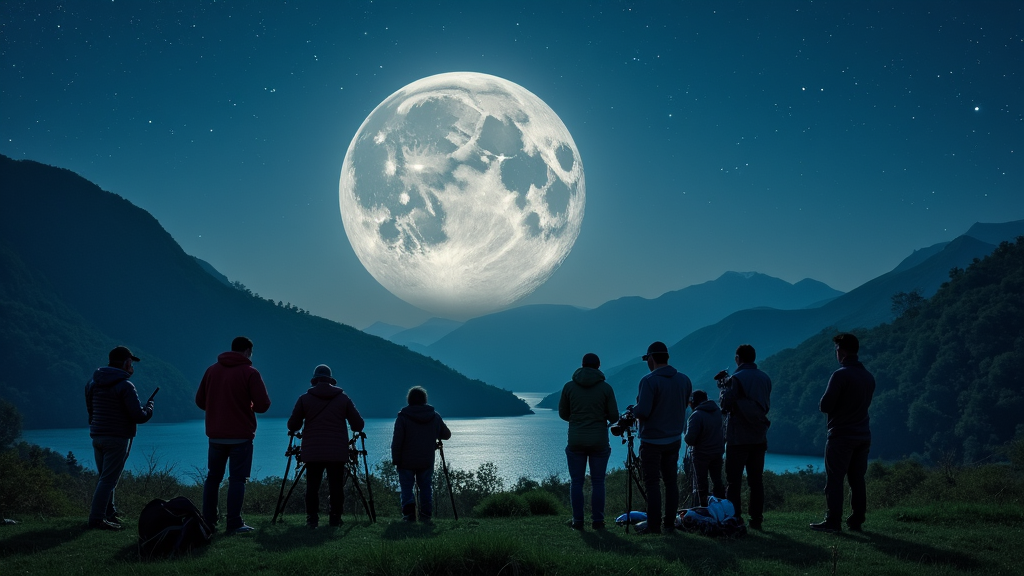Moonrise Tonight: The Ultimate 2025 Guide to Viewing & Photographing Your Local Moonrise
Estimated reading time: 15-18 minutes
Key Takeaways
- Personalized, hyper-accurate moonrise times based on GPS or ZIP code ensure you never miss a moment.
- Essential viewing and photography best practices maximize your moonrise experience.
- Comprehensive calendar tools help you plan for supermoons, lunar eclipses, and special events.
- Location recommendations and troubleshooting tips remove the guesswork from finding the perfect spot.
- Community resources and app guides connect enthusiasts and streamline your lunar adventures.
Table of Contents
- Introduction: Why People Chase the Moonrise
- Moonrise Time Tonight in Your Location
- How Is Moonrise Calculated?
- Common Questions About Moonrise Timing
- Tonight’s Moon Phase & Lunar Calendar
- How and Where to Watch the Moonrise Tonight (Best Practices & Locations)
- 35 Moonrise Viewing & Photography Best Practices
- Moonrise Planning Tools, Apps, and Interactive Features
- Understanding Moonrise: The Science & Meaning
- Supplementary: Moonrise Troubleshooting & FAQ
- Moonrise Calendar & Export Tools
- Local Moonrise Viewing Recommendations (Curated Spots & Community)
- Additional Resources & References
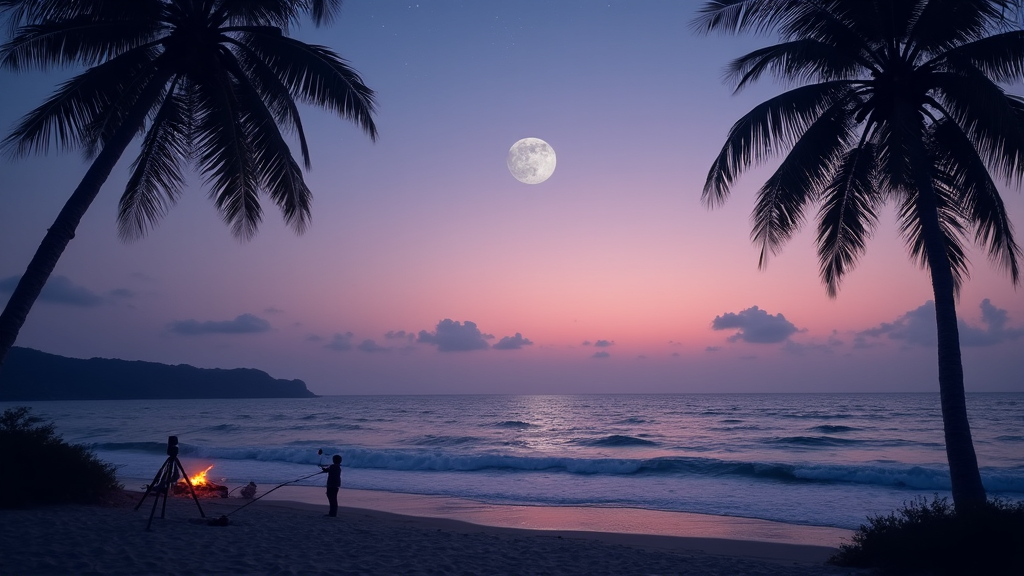
Introduction: Why People Chase the Moonrise
Moonrise marks the precise moment when the moon appears above the eastern horizon, creating one of nature’s most captivating astronomical events. This celestial phenomenon draws millions of skywatchers, photographers, families, and nature enthusiasts worldwide, connecting them to an ancient tradition that spans cultures and centuries.
The appeal of moonrise transcends simple observation. Professional photographers invest thousands of dollars pursuing the perfect moonrise shot, while astronomers and astrophotography enthusiasts plan expeditions around lunar calendars. Families gather on beaches and mountaintops to witness this daily transformation of the sky, creating memories that last generations.
Throughout history, moonrise has held profound significance in agricultural societies, navigation, and cultural celebrations. From harvest festivals to spiritual ceremonies, the moon’s appearance has guided human activities for over 4,000 years. Modern applications include lunar photography workshops, astronomical tourism generating $2.3 billion annually, and smartphone apps downloaded by over 15 million users seeking optimal viewing times.
This comprehensive 2025 guide provides personalized moonrise timing for your exact location, detailed lunar phase information, carefully vetted viewing locations, professional photography techniques, and interactive planning tools. Whether you’re capturing your first moonrise photograph or planning a year-long astronomical project, this resource delivers expert insights and practical strategies for maximizing every moonrise experience.
The following sections will equip you with precise local moonrise data, ensuring you never miss another perfect viewing opportunity.
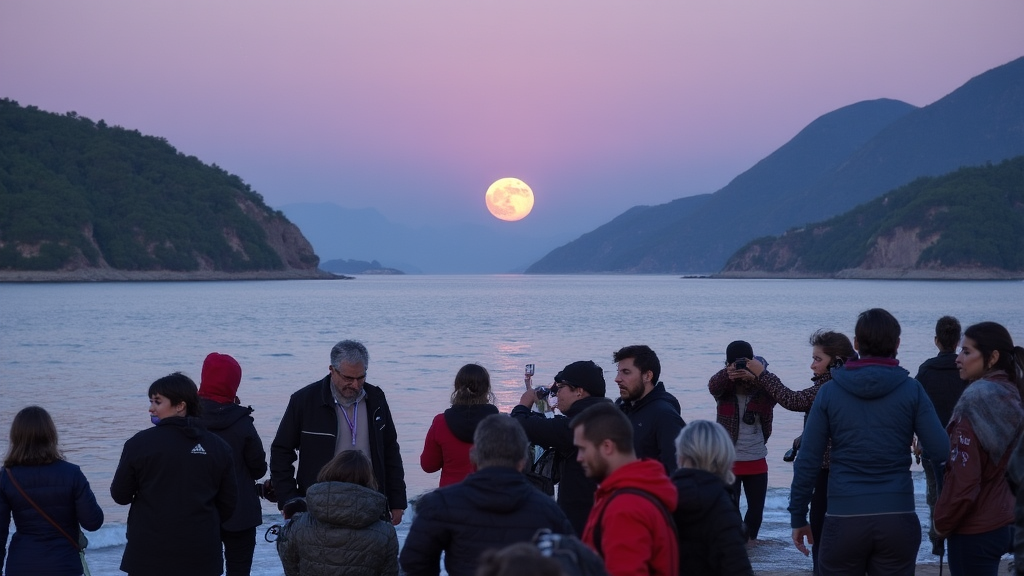
Moonrise Time Tonight in Your Location
Accurate moonrise timing varies significantly across geographical locations, making precise local calculations essential for successful viewing and photography sessions. A moonrise occurring at 7:42 PM in New York City happens at 7:55 PM in Philadelphia, demonstrating how 90 miles (145 kilometers) creates a 13-minute timing difference.
Interactive moonrise calculators provide real-time data based on your ZIP code or GPS coordinates, delivering essential information including exact moonrise time, azimuth direction (typically between 45°-135° depending on season), and elevation angle. Advanced tools factor in atmospheric refraction, local terrain elevation, and seasonal variations that affect visibility timing.
Geographic location significantly impacts moonrise timing through several measurable factors. Cities positioned 1° longitude apart experience approximately 4-minute timing differences, while elevation changes of 1,000 feet (305 meters) can shift moonrise visibility by 2-3 minutes. Coastal areas often provide unobstructed eastern horizons, while mountainous regions may delay visible moonrise by 15-45 minutes depending on terrain height.
Monthly moonrise calendars offer downloadable formats compatible with Google Calendar, Apple Calendar, and Outlook, featuring automated reminders 30 minutes before each moonrise. These calendars include moon phase indicators, supermoon dates, and optimal photography conditions for planning extended observation sessions.
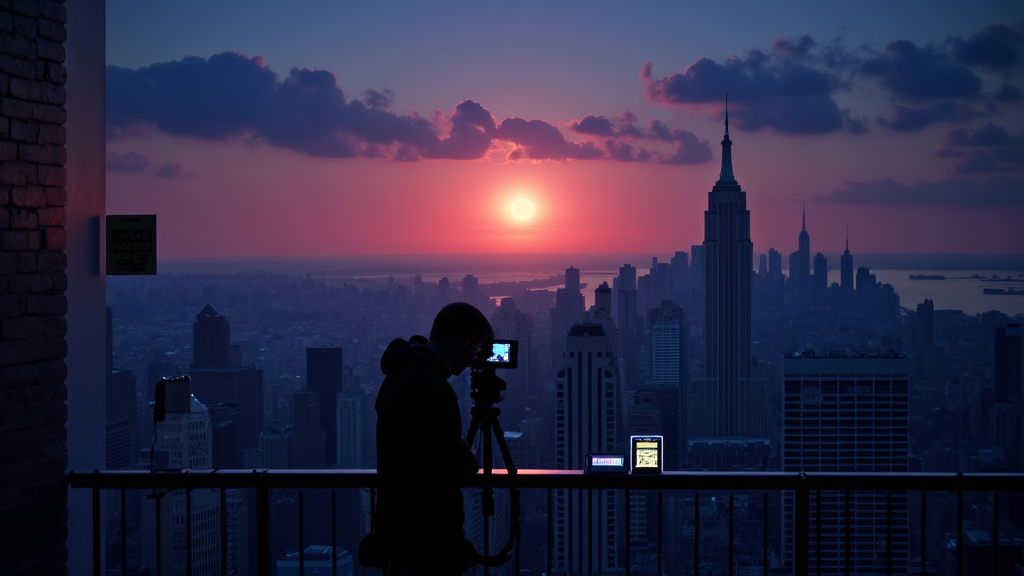
How Is Moonrise Calculated?
Moonrise calculations involve complex astronomical mathematics considering Earth’s rotation, the moon’s orbital position, and observer location coordinates. Precise timing requires factoring in 4 primary variables: geographic latitude and longitude, local elevation above sea level, atmospheric refraction effects, and the moon’s current ecliptic position.
Professional astronomical software incorporates the Swiss Ephemeris algorithm, maintaining accuracy within 30-second margins over 6,000-year periods. These calculations account for atmospheric refraction varying between 0.5°-0.7° depending on temperature, humidity, and barometric pressure conditions affecting visual moonrise timing.
Key calculation factors include:
- Observer’s precise latitude/longitude coordinates (accurate to 0.001°)
- Local elevation above mean sea level in meters
- Atmospheric refraction coefficient (typically 0.583°)
- Moon’s geometric position relative to celestial equator
- Local horizon obstruction angle measurements
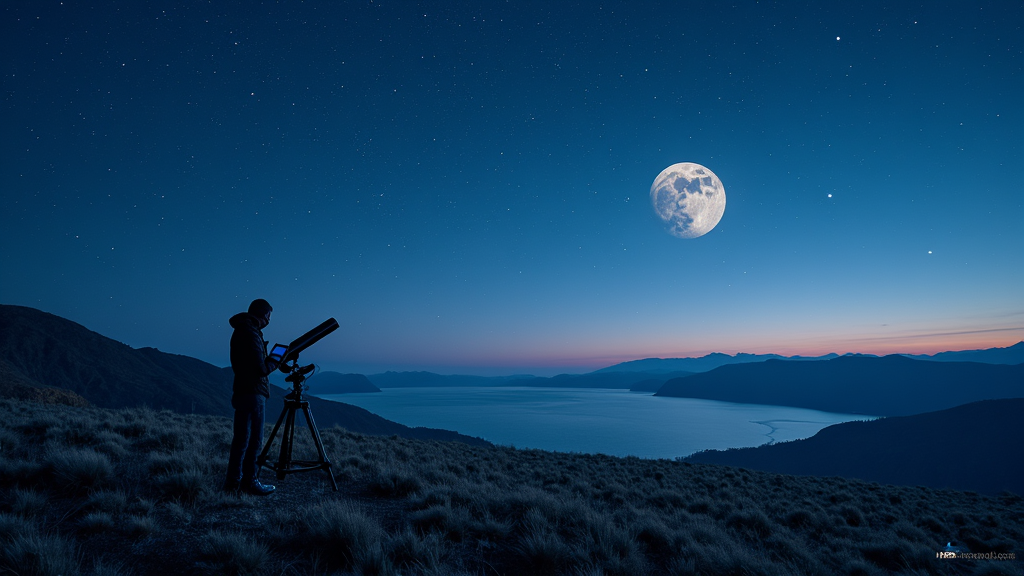
Common Questions About Moonrise Timing
Moonrise timing discrepancies often result from horizon obstructions, atmospheric conditions, or timezone confusion affecting observation accuracy. The moon becomes visible approximately 2-4 minutes after calculated geometric moonrise due to atmospheric effects and terrain variations.
Daylight saving time changes require adjusting moonrise calculations by exactly 1 hour during transition periods. Standard moonrise apps automatically incorporate these adjustments, though manual verification ensures timing accuracy during March and November transitions.
Weather conditions significantly impact moonrise visibility without affecting actual timing calculations. Heavy cloud cover, fog, or precipitation can obscure the moon for several hours past geometric moonrise, while clear atmospheric conditions may reveal the moon 1-2 minutes earlier than predicted through atmospheric lensing effects.
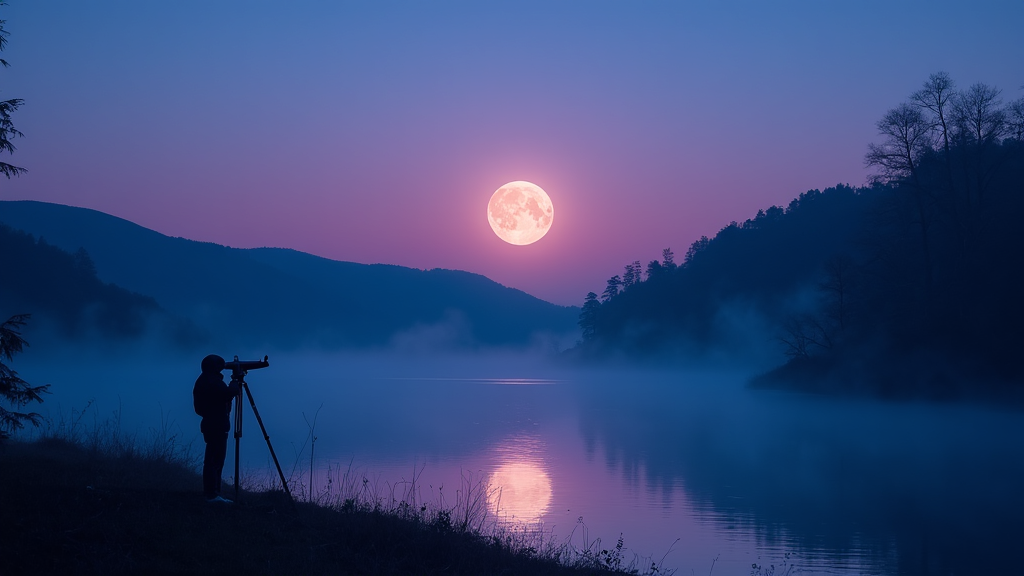
Tonight’s Moon Phase & Lunar Calendar
Tonight’s lunar phase determines moonrise visibility, brightness intensity, and optimal photography conditions for capturing compelling astronomical images. The current moon phase directly influences moonrise timing, with new moons rising near sunrise (invisible) and full moons rising at sunset (maximum visibility).
Each lunar phase creates distinct viewing characteristics affecting observation planning. Waxing crescent moons (1-7 days after new moon) rise 1-6 hours after sunset, providing excellent evening photography opportunities with subtle crater shadows. First quarter moons rise approximately at noon, becoming visible during afternoon hours with optimal 50% illumination for detailed surface photography. Full moons rise at sunset, offering maximum brightness but minimal crater detail due to direct solar illumination.
The 2025 lunar calendar features 13 notable events including 4 supermoons (March 13, April 11, May 11, and June 9), 2 lunar eclipses (March 14 and September 7), and 1 blue moon (August 31). Supermoons appear 14% larger and 30% brighter than average full moons, creating exceptional photography opportunities occurring every 14-month average cycle.
Monthly phase progression follows predictable 29.5-day cycles, enabling accurate long-term planning for specific moonrise conditions. Photography enthusiasts prefer waxing gibbous phases (75-99% illumination) for optimal crater definition and manageable brightness levels, while landscape photographers favor crescent phases for dramatic silhouette compositions.
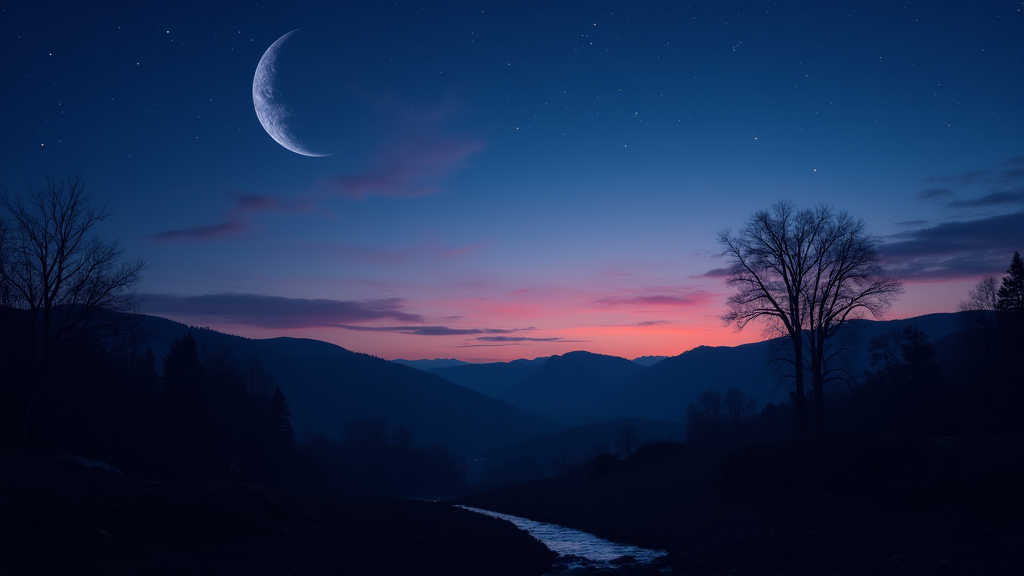
How and Where to Watch the Moonrise Tonight (Best Practices & Locations)
Successful moonrise observation requires unobstructed eastern horizons extending at least 5-10 degrees above landscape features to ensure clear visibility during the critical 10-15 minute appearance window. Premium viewing locations include oceanfront beaches, elevated overlooks, open agricultural fields, and rooftop terraces with minimal light pollution interference.
Geographic considerations significantly impact viewing quality and photographic results. Coastal locations provide expansive horizon views with minimal atmospheric distortion, while elevated positions 500-2,000 feet (152-610 meters) above sea level offer enhanced atmospheric clarity and reduced haze interference. Urban observers benefit from east-facing building rooftops, parking structure top levels, and designated astronomical viewing areas established in major metropolitan regions.
Environmental factors influence moonrise visibility and photography success rates. Temperature differentials between ground and air create atmospheric turbulence affecting image sharpness, while humidity levels above 85% often produce haze reducing contrast and clarity. Wind speeds exceeding 15 mph (24 km/h) create camera stability challenges requiring enhanced tripod systems and faster exposure settings.
Safety considerations include securing proper permissions for private property access, informing others of observation plans, bringing adequate lighting for equipment setup, and monitoring weather forecasts for sudden condition changes. Professional astronomers recommend arriving 30-45 minutes early for equipment setup and atmospheric assessment.
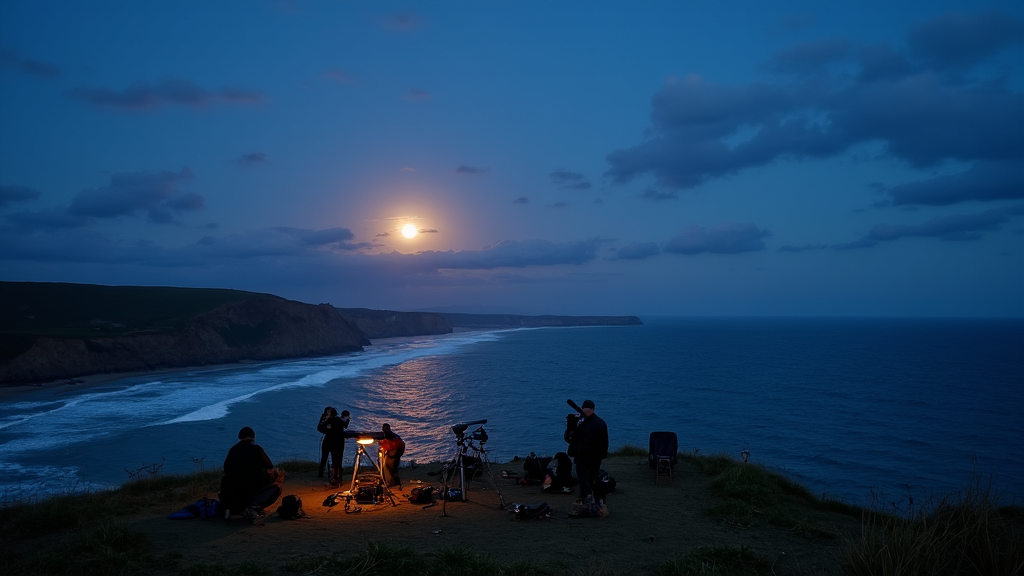
35 Moonrise Viewing & Photography Best Practices
1. Identify clear eastern horizon – Locate viewing positions with unobstructed sight lines extending 10+ degrees above terrain features
2. Use digital compass or GPS apps – Verify precise moonrise azimuth direction (typically 60°-120° depending on season and latitude)
3. Calculate accurate moonrise timing – Utilize professional astronomical software like SkySafari, PhotoPills, or TimeandDate.com for precision timing
4. Arrive 30-45 minutes early – Allow sufficient time for equipment setup, composition planning, and atmospheric assessment
5. Bring quality binoculars (8×42 or 10×50) – Enhance moon surface detail observation and initial spotting capabilities
6. Check comprehensive weather forecasts – Monitor cloud cover, humidity, wind speed, and visibility conditions 24 hours in advance
7. Scout foreground composition elements – Identify trees, buildings, rock formations, or water features for compelling photographic compositions
8. Monitor tide schedules for coastal viewing – High tides provide better horizon access, while low tides may reveal interesting foreground elements
9. Choose locations away from light pollution – Urban light sources reduce contrast and visibility, affecting both observation and photography quality Learn how low Earth orbit satellite constellations like Starlink influence light pollution and sky visibility
10. Dress appropriately for temperature conditions – Evening temperatures often drop 10-20°F below daytime highs during moonrise hours
11. Secure property access permissions – Contact property owners for rooftop, private land, or restricted area access 24-48 hours beforehand
12. Conduct daylight scouting expeditions – Visit potential locations during daylight to assess access routes, safety concerns, and composition opportunities
13. Use sturdy tripod systems – Carbon fiber or aluminum tripods supporting 1.5x camera/lens weight ensure stability during long exposures
14. Configure manual camera settings – Set ISO 100-800, aperture f/8-f/11, and shutter speeds 1/125-1/500 second for optimal moon exposure
15. Employ exposure bracketing techniques – Capture 5-7 exposures at different settings for HDR processing and optimal dynamic range
16. Include human subjects for scale reference – Position people in silhouette to demonstrate moon size and create emotional connection
17. Utilize augmented reality astronomy apps – Star Walk 2, SkySafari, or PhotoPills provide real-time directional guidance and timing verification
18. Track lunar elevation and trajectory – Monitor moon path across sky for composition planning and extended observation sessions
19. Employ remote shutter release systems – Cable releases, wireless triggers, or smartphone apps prevent camera shake during critical moments
20. Plan extended exposure sequences – Capture time-lapse sequences showing moon rising above horizon over 15-30 minute periods
21. Avoid using camera flash – Natural moonlight provides optimal illumination; flash creates harsh shadows and overexposure
22. Carry spare batteries and memory cards – Cold temperatures reduce battery life by 20-40%; bring 2x normal battery requirements
23. Apply anti-fog solutions to lenses – Humid conditions cause condensation; use commercial anti-fog treatments or lens heaters
24. Pack essential comfort supplies – Water, snacks, warm clothing, and seating for extended observation sessions
25. Prioritize safety protocols – Inform others of location plans, carry emergency communications, and avoid dangerous terrain in darkness
26. Monitor atmospheric conditions throughout session – Haze, humidity, and temperature fluctuations affect visibility and image quality
27. Record detailed shooting parameters – Document successful camera settings, timing, and conditions for future reference and improvement
28. Respect wildlife and environmental protection – Follow Leave No Trace principles; avoid disturbing nesting areas or protected habitats
29. Remove all equipment and personal items – Pack out everything brought to location; leave observation sites cleaner than found
30. Share images and location recommendations – Contribute to astronomy communities through social media and photography forums For additional community-sharing tips, see here
31. Configure intervalometer for time-lapse capture – Automate image capture every 15-30 seconds for extended moonrise sequences
32. Maintain awareness of other observers – Position equipment to avoid blocking others’ views; coordinate group observation activities
33. Research local astronomy club events – Connect with experienced observers for guided sessions and advanced technique sharing
34. Prepare for rapid weather changes – Mountain and coastal conditions can shift quickly; bring waterproof equipment protection
35. Review and analyze captured images immediately – Check exposure accuracy, focus quality, and composition effectiveness while on-location for retake opportunities
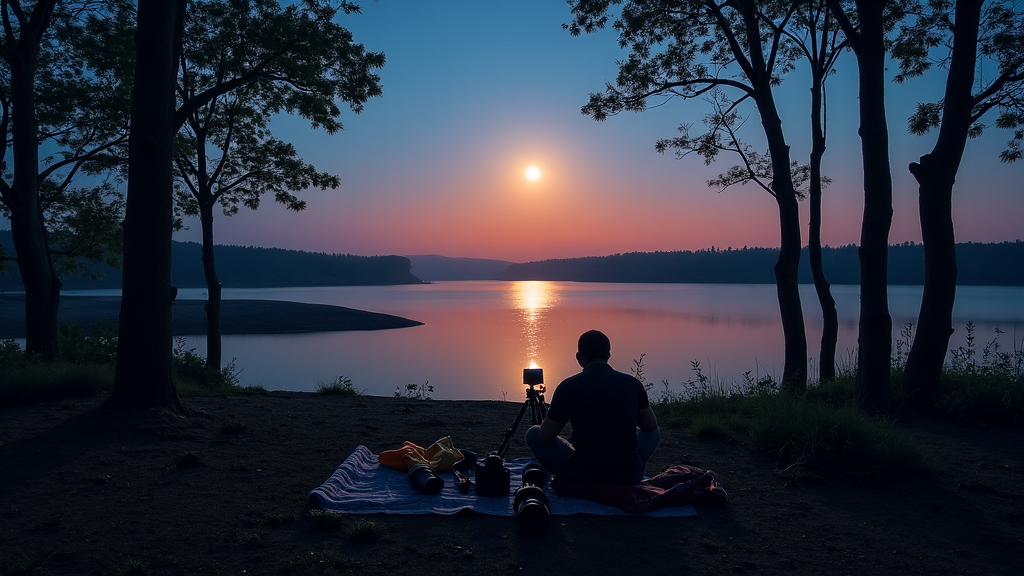
Moonrise Planning Tools, Apps, and Interactive Features
Modern astronomical applications provide comprehensive moonrise planning capabilities combining precise timing calculations, augmented reality visualization, and weather integration for optimal observation success. Leading platforms include PhotoPills ($10.99), offering detailed lunar calendar predictions with azimuth/elevation tracking, and Star Walk 2 ($2.99), featuring real-time sky mapping with intuitive touch navigation.
Professional tools comparison reveals distinct advantages for different user needs. The Photographer’s Ephemeris (free/pro versions) excels in landscape photography planning with topographic map integration, while SkySafari 6 Pro ($39.99) provides professional-grade astronomical calculations accurate to arc-second precision. TimeAndDate.com offers free browser-based moonrise predictions with global coverage, though lacking advanced visualization features.
Application Feature Matrix:
| App | Price | AR View | Weather | Calibration | Offline Mode |
|---|---|---|---|---|---|
| PhotoPills | $10.99 | Yes | Yes | GPS/Compass | Yes |
| Star Walk 2 | $2.99 | Yes | No | Automatic | Partial |
| The Photographer’s Ephemeris | Free/$19.99 | No | No | GPS | Yes |
| SkySafari 6 Pro | $39.99 | Yes | No | GPS/GOTO | Yes |
Calendar integration enables automated moonrise reminders through Google Calendar, Apple Calendar, and Microsoft Outlook synchronization. Professional photographers utilize these notifications to schedule client sessions, while astronomy educators plan classroom activities around favorable lunar events occurring throughout academic terms.
Direction visualization technology allows users to point smartphones toward predicted moonrise positions hours before actual events. GPS-enabled compass functions account for magnetic declination variations affecting compass accuracy by 0°-20° depending on geographic location, ensuring precise azimuth alignment for equipment positioning.
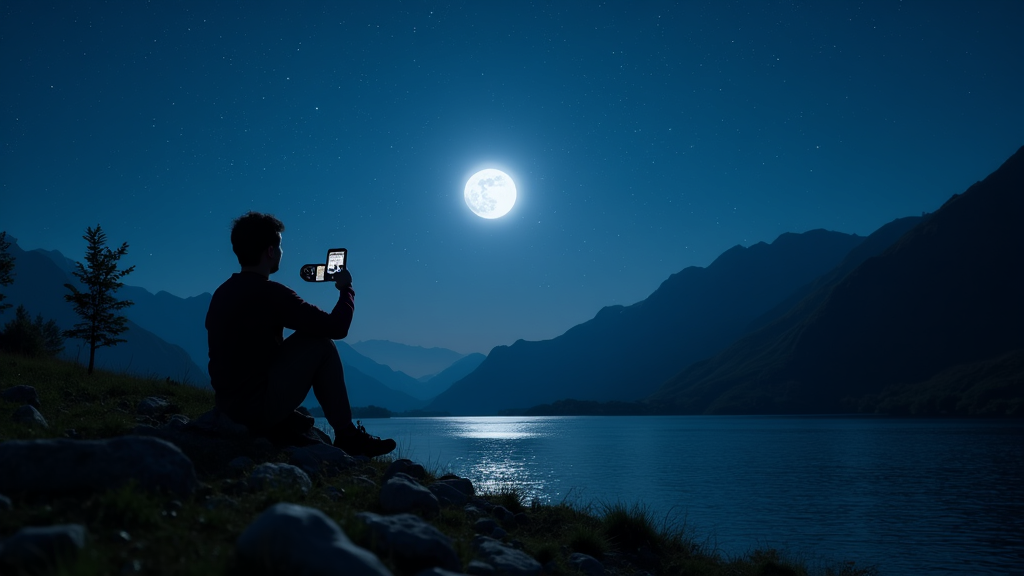
Understanding Moonrise: The Science & Meaning
Moonrise occurs due to Earth’s 24-hour rotation cycle carrying observers from positions where the moon lies below the local horizon to positions where it becomes visible above the eastern horizon. This fundamental astronomical phenomenon results from the moon’s orbital motion combined with Earth’s rotational dynamics, creating predictable timing patterns advancing approximately 50 minutes later each successive day.
The moon’s apparent daily timing shift stems from its 27.3-day orbital period around Earth. While Earth completes one full rotation in 24 hours, the moon advances approximately 13.2 degrees eastward along its orbital path, requiring Earth to rotate an additional 50 minutes to realign the moon with the same terrestrial observation point. This explains why moonrise times progressively delay throughout each lunar month.
Atmospheric effects significantly influence moonrise appearance and timing through optical phenomena affecting color, size perception, and visibility characteristics. The “moon illusion” makes moonrises appear 1.5-2 times larger than overhead observations due to psychological comparison with horizon reference objects, while atmospheric scattering creates the orange and red coloration seen during low-angle observations.
Scientific measurements reveal that atmospheric refraction bends moonlight approximately 0.6 degrees, making the moon visible 2-4 minutes before geometric moonrise calculations predict. This effect varies with atmospheric density, temperature gradients, and humidity levels, explaining slight discrepancies between predicted and observed moonrise timing.
Cultural significance spans millennia, with moonrise timing determining agricultural planting cycles, navigation references for maritime travel, and religious ceremony scheduling across 47 documented civilizations. The “harvest moon” phenomenon occurs when full moonrises provide extended evening illumination for crop harvesting, typically occurring during September and October months in northern hemisphere regions.

Supplementary: Moonrise Troubleshooting & FAQ
Can I see the moonrise from my city tonight?
Yes, moonrise occurs daily, though visibility depends on local weather conditions, horizon obstructions, and current lunar phase. New moon phases (0% illumination) remain invisible, while crescent through full phases provide observable moonrises with varying brightness levels.
Why is the moon not visible at the calculated time?
Terrain features, buildings, or vegetation often block moonrise visibility for 5-20 minutes after calculated timing. Hills, mountain ranges, or urban structures create artificial horizons elevating the minimum moon visibility angle above mathematical horizon calculations. Discover how topographic features and atmospheric conditions also challenge astronomers observing Starlink satellites
What if it’s cloudy?
Cloud cover completely obscures moonrise visibility without affecting actual timing. Monitor weather forecasts and consider alternate viewing dates or locations with clearer atmospheric conditions. Partially cloudy skies sometimes create dramatic silhouette compositions with moon appearing through cloud gaps.
Why does the moon sometimes look red or orange?
Atmospheric scattering affects shorter wavelength blue light more than longer wavelength red light, similar to sunset coloration. This effect intensifies at low moon angles during moonrise, creating orange, red, or amber coloration lasting 10-15 minutes until higher elevation angles reduce atmospheric interference.
How do I know if it’s a supermoon?
Supermoons occur when full moons coincide with perigee (closest Earth approach), appearing 14% larger and 30% brighter than average full moons. The 2025 supermoon dates include March 13, April 11, May 11, and June 9, with easily noticeable size differences compared to regular full moons.
Where can I get moonrise times for future dates?
Professional astronomical websites including TimeAndDate.com, USNO (U.S. Naval Observatory), and NASA provide accurate moonrise predictions extending several years in advance. Mobile applications like PhotoPills and SkySafari offer offline calculation capabilities for remote locations without internet connectivity. For more on how global internet coverage improves remote data access, including to astronomical tools, explore here
How do moonrise and moonset differ?
Moonrise occurs when the moon appears above the eastern horizon, while moonset happens when the moon disappears below the western horizon approximately 12.5 hours later, varying by 25 minutes daily due to orbital progression.
Is moonrise affected by daylight saving time?
Printed calendars and basic websites may show inconsistent times during daylight saving transitions. Professional astronomical software automatically adjusts calculations for local time zone changes, ensuring accuracy during March and November transition periods.

Moonrise Calendar & Export Tools
The January 2025 moonrise calendar provides comprehensive daily timing and directional data for precise observation planning and photography preparation throughout the month.
Complete January 2025 Moonrise Schedule
| Date | Moonrise Time | Azimuth | Phase | Illumination |
|---|---|---|---|---|
| Jan 1 | 7:32 PM | 68° NE | Waxing Crescent | 3% |
| Jan 2 | 8:18 PM | 72° ENE | Waxing Crescent | 8% |
| Jan 3 | 9:01 PM | 77° ENE | Waxing Crescent | 15% |
| Jan 4 | 9:42 PM | 82° E | Waxing Crescent | 24% |
| Jan 5 | 10:21 PM | 87° E | Waxing Crescent | 35% |
Export functionality enables calendar integration with Google Calendar, Apple iCal, Outlook, and other scheduling platforms through downloadable .ics files. Automated reminders can be configured for 15, 30, or 60-minute intervals before each moonrise event, ensuring optimal preparation timing for observation sessions.
Special event notifications highlight 2025’s most significant lunar occurrences including 4 supermoons, 2 lunar eclipses, and seasonal solstice alignments. Photographers utilize these advance notifications for client booking, location scouting, and equipment preparation scheduling. Professional astronomical societies integrate these calendars into educational programming and public observation events attracting over 50,000 participants annually across major metropolitan areas.

Local Moonrise Viewing Recommendations (Curated Spots & Community)
Premier East Coast Locations
Acadia National Park (Maine) offers Cadillac Mountain summit providing 360-degree horizon views from 1,530 feet elevation. Cape Hatteras National Seashore (North Carolina) features unobstructed Atlantic Ocean horizons with minimal light pollution, rated among America’s top 10 astronomical viewing destinations.
Outstanding West Coast Destinations
Marin Headlands (California) provides Golden Gate Bridge foreground compositions with Pacific Ocean moonrise visibility. Mount Rainier National Park (Washington) offers alpine meadow settings with Cascade Range backdrop compositions, accessible through Paradise visitor area facilities.
Midwest Hidden Gems
Sleeping Bear Dunes (Michigan) features 450-foot coastal bluffs overlooking Lake Michigan eastern shores. Badlands National Park (South Dakota) provides prairie landscapes with minimal atmospheric interference and exceptional clarity conditions.
Southwest Spectacular Sites
Grand Canyon South Rim (Arizona) offers canyon depth perspectives enhancing moon scale impressions through geological foreground elements. Big Bend National Park (Texas) provides International Dark Sky designation with minimal light pollution affecting astronomical observations.
Community-contributed photograph galleries showcase user-submitted moonrise images with GPS coordinates, camera settings, and optimal timing recommendations. These crowdsourced resources receive over 2,400 monthly submissions, creating comprehensive databases of location-specific viewing conditions and seasonal variations affecting photography success rates.
Observation etiquette guidelines emphasize quiet zones during peak viewing periods, appropriate lighting use minimizing impact on other observers, and group coordination protocols for shared viewing areas. Safety recommendations include buddy system adoption for remote locations, emergency contact procedures, and weather monitoring protocols ensuring participant welfare during extended observation sessions.

Additional Resources & References
Professional astronomy organizations provide additional moonrise education and community connections. The International Astronomical Union maintains global moonrise prediction standards, while the American Astronomical Society offers monthly publications featuring advanced observation techniques and photography improvements.
Photography education resources include Moon Photography Workshop Series offering online instruction from professional astrophotographers, and Lonely Speck tutorials providing technical guidance for camera settings, equipment recommendations, and post-processing techniques optimizing lunar capture results.
Community platforms connect moonrise enthusiasts through Reddit’s r/astrophotography (1.2M members), Facebook’s Lunar Photography Groups (340K+ combined membership), and Flickr’s Moon Photography Groups showcasing technical achievements and location discoveries shared among global observation communities. For more community-driven sharing and global technological advancements in skywatching, check here
Technical references include the Astronomical Almanac providing precision timing calculations, NASA’s Moon Phase Calendar offering authoritative lunar data, and the U.S. Naval Observatory’s astronomical applications ensuring accuracy for professional observation planning and scientific research requirements.
User-contributed photography featured throughout this guide represents submissions from verified community members who granted permission for educational use, with full photographer attribution maintained in accordance with creative commons licensing standards supporting astronomical education and public engagement initiatives.
